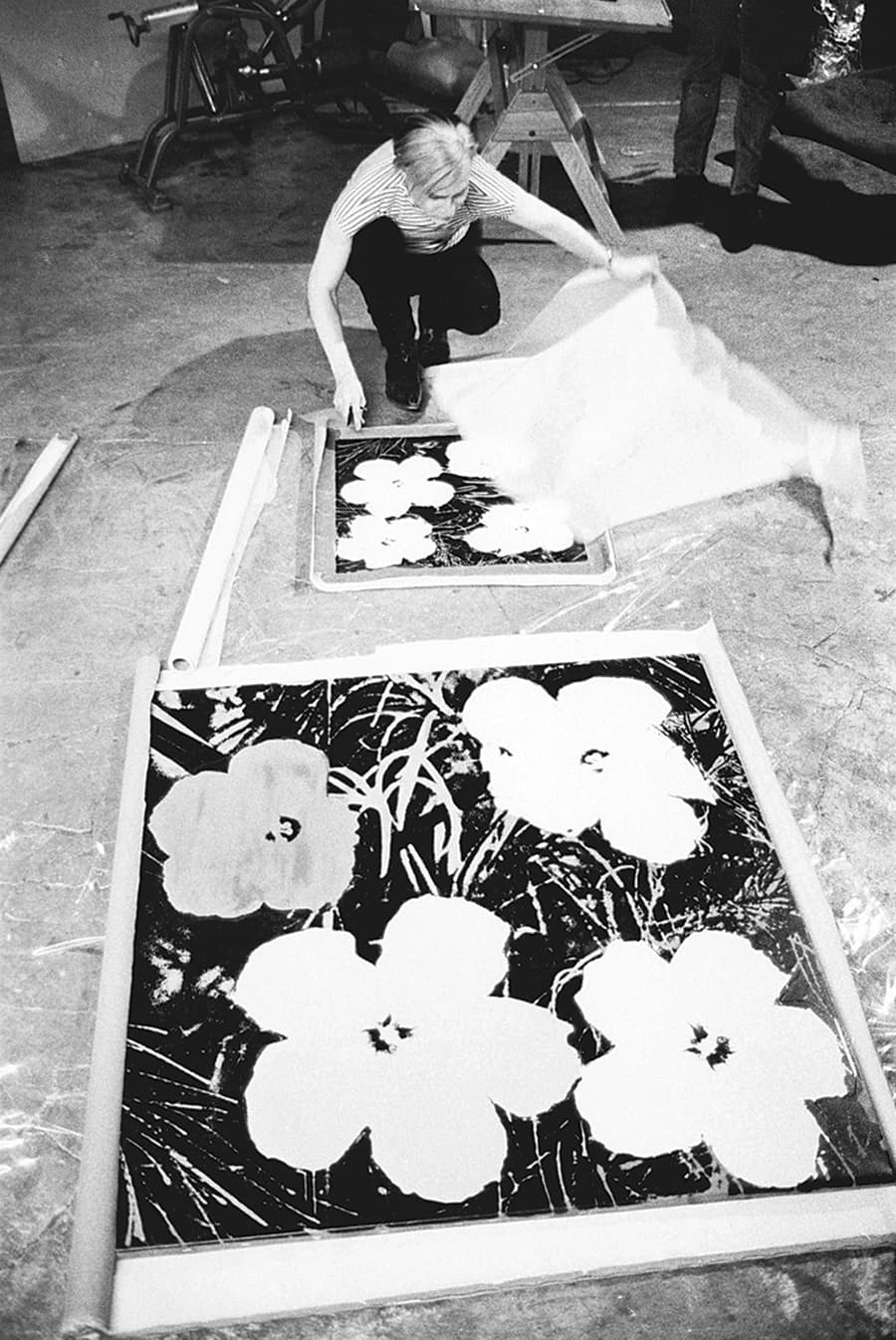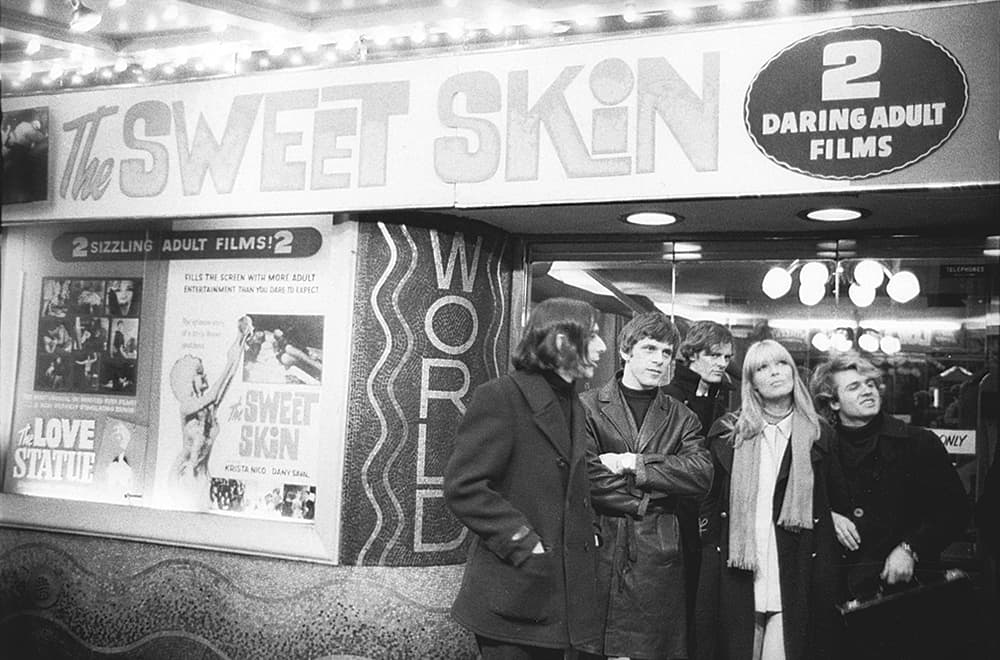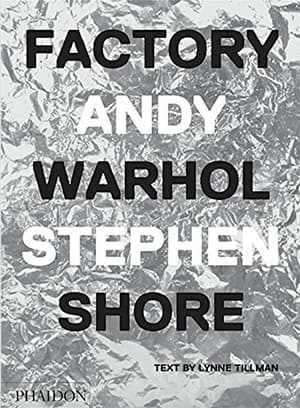
Who else? Warhol captured on the fire escape of the Factory, 231 East 47th Street
The art scene of the 1960s is inextricably connected to the cool detachment of Andy Warhol’s vast Pop Art output and the strange circus he built around his ego. It’s difficult not to see Warhol as the catalyst that began to tip art over into the realms of commercialism and big money. How you feel about that depends entirely in how you feel about modern art. Many would argue that Warhol’s art was a deliberately shallow attempt to create a form of satire on the burgeoning consumerist society. Others perhaps would see it as just a cynical cash-grab. Regardless, Warhol’s world is considered vital in the history of art and the mystique he built around himself with his monosyllabic answers to interviews and his eyes hidden behind impenetrably dark shades is undoubtedly attractive.
Back in 1962, Andy Warhol decided to set up a studio in Midtown Manhattan (231 East 47th Street,to be precise). Rent was just $100 a year, so easily affordable. The Factory quickly became known as the Silver Factory due to the copious amount of tinfoil that lined the walls, giving the location a kind of fractured and futuristic hall of mirrors feel. Aside from producing paintings here, Warhol also produced sculptures and films. The name ‘Factory’ is to be taken fairly literally. ‘It wasn’t called the Factory for nothing,’ musician John Cale later said. ‘It was where the assembly line for the silkscreens happened. While one person was making a silkscreen, somebody else would be filming a screen test. Every day something new.’

Warhol in the process of silk screening flowers. In 1964 he exhibited them at the Leo Castelli gallery, New York
The building churned out work at a dizzying rate, down mostly to the army of workers Warhol assembled around him. At other times you could walk into another room and find the Velvet Underground rehearsing and revolutionising contemporary music. Present around this time was a wet- behind-the-ears photographer by the name of Stephen Shore. He was only 18 as he stalked around the building photographing just about every angle of the place and the people that existed there.
A slice of history
The first thing to note is that Factory: Andy Warhol is absolutely gorgeous. Its silver-lined borders and large size makes it a real pleasure to go through. The images themselves are genuinely fascinating. The whole cast of characters are here – Lou Reed, Billy Name, Sterling Morrison, Paul Morrissey, et al. Stephen Shore’s images are quite beautiful. They seem to be more than just snapshots caught on the fly. Each shot tells a story, takes you right inside the circus, makes you feel for a brief time a part of what you’re seeing.
What’s more, we get a series of interviews with some of the aforementioned key players. All give you a real and honest insight into what it was like to exist in this space and witness Warhol spinning his magic within the Factory walls. Shore clearly has a reverence for this time, though was apart enough to ensure he never became overwhelmed or too caught up in the spell.

John Cale, Jan Cramer, Paul Morrissey, Nico and General Malanga
It’s an attitude distinct from the borderline sneering of photographer Nat Finkelstein who published his own volume of images back in 1999 titled Andy Warhol: The Factory Years, 1964-67. Those images went on to be seen as the true iconic images of Warhol’s Factory, something that seemed to stick in Finkelstein’s craw, evidenced by the interviews Finkelstein conducted around that time were he denounced Warhol as, among other things, a shallow genius for shallow people.
Once he’d left Warhol’s crew behind Stephen Shore went on to establish himself as perhaps one of America’s most important photographers. His colour studies of the banal scenes of everyday America became deeply influential and sit alongside William Eggleston and Fred Herzog in the pantheon of image-makers who demonstrated that everyday life was full of wonder. You could argue that Warhol’s dealing with everyday objects such as soup cans had an impact upon how Shore began to see the world. But that’s very open to debate. Warhol and his crew vacated the original Factory in 1967 as the city ordered that the building be torn down so they could build more apartment buildings. They all relocated to Union Square West. The demolition of the original Factory was almost symbolic.
Just one year later Warhol was shot by Valerie Solanas, driving Warhol into a state of paranoia and close to demolishing the carefully cultivated persona he had so long fought to maintain. It was the end of the ‘golden period’ of Warhol’s mystique. Luckily we have this curious record to preserve it.

Published by Phaidon
Price £39.95, 192 pages, hardback
ISBN 978-0- 714872-7-442








